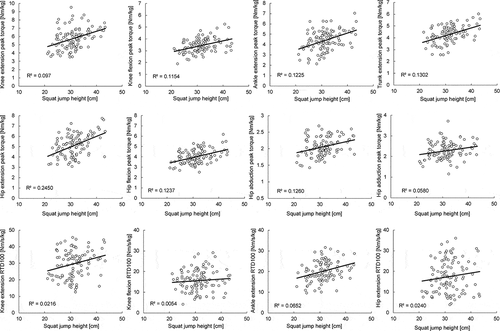Figures & data
Figure 1. Isometric maximal voluntary contractions as performed for assessment of hip flexors (a), hip extensors (b), hip adductors and abductors (c), trunk extension (d), trunk flexion (e), trunk lateral flexion (f), ankle flexion and extension (g and h) and knee flexion and extension (i).

Table 1. Descriptive statistics and intra-session reliability for all outcome variables
Table 2. Pearson correlation coefficients among the height of the three jump types and all torque/RFD outcome variables
Figure 2. Scatterplots depicting the relationship between squat jump heights and single-joint peak torque outcomes (upper and middle panel), and rate of torque development outcomes (lower panel).

Table 3. Linear regression models for all three jump types
